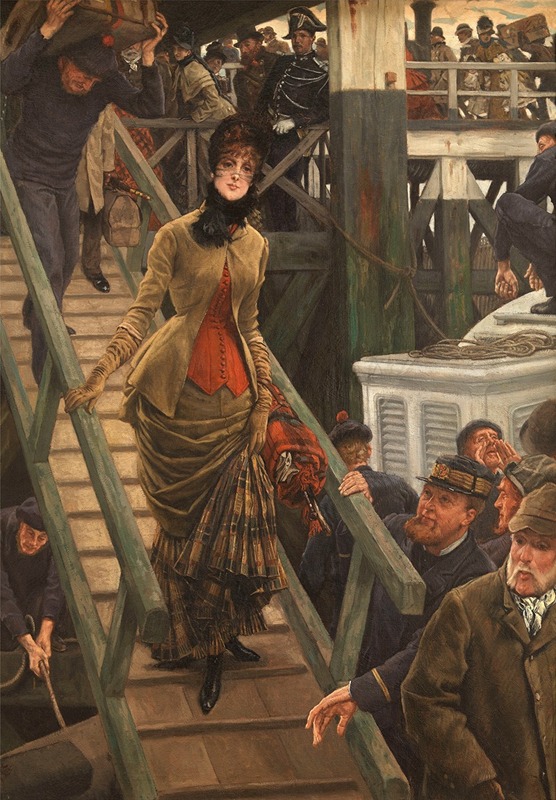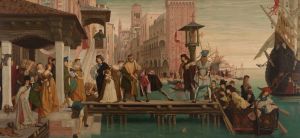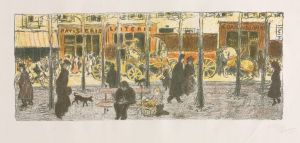
Embarkation at Calais
A hand-painted replica of James Tissot’s masterpiece Embarkation at Calais, meticulously crafted by professional artists to capture the true essence of the original. Each piece is created with museum-quality canvas and rare mineral pigments, carefully painted by experienced artists with delicate brushstrokes and rich, layered colors to perfectly recreate the texture of the original artwork. Unlike machine-printed reproductions, this hand-painted version brings the painting to life, infused with the artist’s emotions and skill in every stroke. Whether for personal collection or home decoration, it instantly elevates the artistic atmosphere of any space.
"Embarkation at Calais" is a painting by the French artist James Tissot, completed in 1878. Tissot, known for his detailed and vibrant depictions of contemporary life, was a prominent figure in both French and British art circles during the late 19th century. His works often reflect the fashion, social customs, and daily activities of the time, capturing the essence of the Victorian and Belle Époque eras.
The painting "Embarkation at Calais" is a fine example of Tissot's skill in portraying the nuances of social interaction and the intricacies of modern life. It depicts a bustling scene at the port of Calais, a significant location for travel between France and England. The port was a hub of activity, serving as a gateway for travelers crossing the English Channel. Tissot's choice of this setting reflects the increasing mobility and interconnectedness of the period, as well as the importance of travel in the social and economic life of the time.
In the painting, Tissot captures a moment of departure, with figures engaged in various activities associated with travel. The composition is characterized by its attention to detail and the careful arrangement of figures, which guide the viewer's eye through the scene. The figures are dressed in the fashionable attire of the late 19th century, showcasing Tissot's keen interest in fashion and his ability to render textiles and clothing with precision.
The painting is notable for its vibrant color palette and the play of light, which adds a sense of immediacy and realism to the scene. Tissot's use of light and shadow creates depth and dimension, enhancing the overall dynamism of the composition. The artist's meticulous technique is evident in the intricate details of the figures and their surroundings, from the folds of clothing to the textures of the port's architecture.
"Embarkation at Calais" reflects Tissot's broader artistic themes, including his fascination with modernity and the social dynamics of his time. The painting can be seen as a commentary on the nature of travel and the experiences of those who partake in it, capturing both the excitement and the complexity of embarking on a journey.
Tissot's work was well-received during his lifetime, and he enjoyed considerable success in both France and England. His paintings were popular among collectors and the public, and he exhibited regularly at prestigious venues such as the Royal Academy in London. Today, Tissot's works are held in major art collections around the world, and he is recognized as a significant figure in 19th-century art.
"Embarkation at Calais" remains an important example of Tissot's oeuvre, illustrating his ability to blend narrative content with technical skill. The painting continues to be appreciated for its historical significance and its insight into the cultural and social milieu of the late 19th century.


















